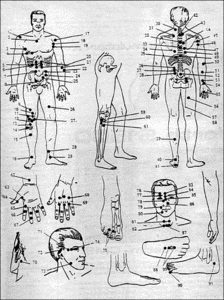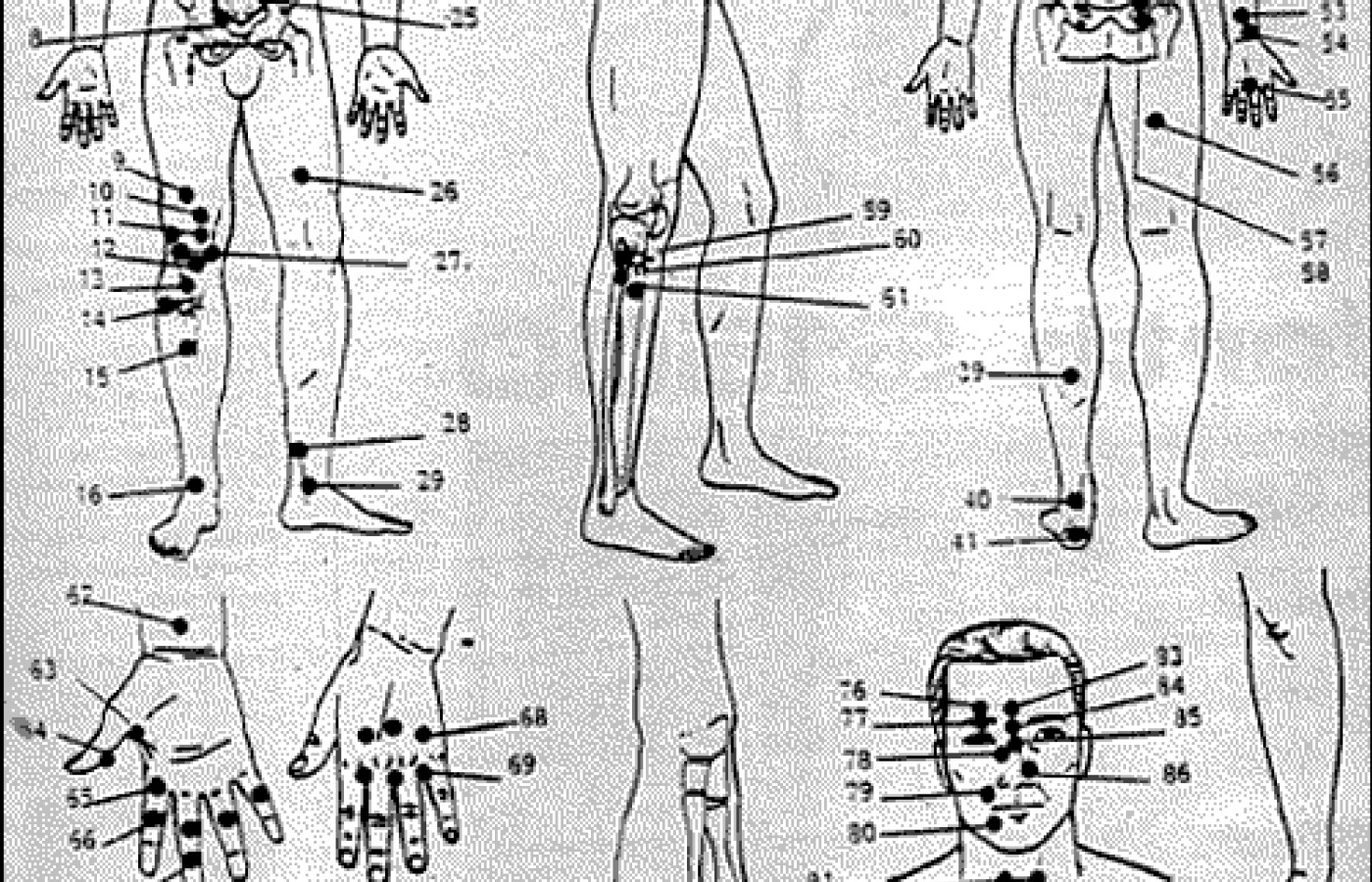It is estimated that 61% of patients with CTS avoid taking surgical options due to postoperative complications and costly surgical procedures. Chiropractic care offers a comprehensive and effective treatment for carpal tunnel syndrome, addressing the condition from multiple angles. Recent studies also have unveiled a game-changing adjunct to chiropractic treatments for CTS: nerve flossing.
Seven Years and Seven Months Ahead of Schedule
As I reflect on my columns, I have come to the stark realization this issue will mark my 19th installment, including the one on Hand Miracle Points I wrote several years before becoming a "regular" columnist in October 1988.
I am continually intimidated, as I'm sure many of you reading this are, how Don Petersen Jr. and his exceptional staff can produce a tabloid of this caliber twice a month and provide it free of charge to every doctor of chiropractic, chiropractic student and supplier known to exist on planet earth. The whole logistics of the monumental amount of detail which goes into each issue is mindboggling.
Here I am, one journalist of a staff of scores whose only obligation is to meet my simple deadline with a copy ready to print in time for the next issue. Every month I promise myself and assistant editor, Debi Pugliese, "I will provide you with several month's articles in advance," and every month I'm federal expressing my column on the last day, as Dynamic Chiropractic holds the presses. Unfortunately, and as you can imagine, most of the other contributors have a similar problem. If I haven't said it before, allow me to say it now, "Keep up the good work, Don."
Well, my new year resolution for 1990 was to stay significantly ahead of my schedule to help lighten the load in the editorial office at press time. Suddenly, a flash of brilliancy came over me! I am aware of 91 specific miracle points over and above the ones I have previously discussed in the pages of "DC." I could write a column and show an illustration of each one of them, include case histories and comments on the 91 points and, lo-and-behold, I would be "seven years and seven months" ahead of schedule.
However, as I began to contemplate all of the significant factors in acupuncture/meridian therapy I have not touched on, such as ear acupuncture, cerebral acupuncture, Ryodoraku examination, five element correlation, and approximately 70 additional items I would like to discuss with you right now, the decision was made to share all 91 miracle points with you this month. Don, Debi, I'll send you a specific acupressure formula for stress induced gastric ulcer and be expecting my federal express package on the last day as usual.
Somewhere in the course of Asian history, the concept of acupuncture was established. When, where and how is a mystery today, and in all liklihood will remain that way. During this 5,000 (or more) year history, a number of specific reflex points occurring on the body and outside of the traditional meridians were firmly established. These points were referred to as "extra" points or more popularly as "miracle points" for their incredible success in a specific problem.
I could very easily write a column on each one of the 91 points to be presented in this article; however, it's important to remember "what you see is what you get." In other words, each point illustrated here is found in a specific location and has been shown to be extremely effective in a specific malady.
Keep this article in a safe and known location and refer to it often. What you are to be presented with is advanced acupuncture of the highest degree as these points are generally known to and used only by masters.
I personally use these points in my clinic and have likewise shared them with hundreds of students who constantly report to me of their success. Even though I cannot explain why they are effective, the clinical effects are extremely noteworthy.
A few points: one Tsun is the widest distance across the thumb. Three Tsun is a measurement which is four fingersbreadth wide. A "Fen" is one tenth of a Tsun; therefore, "5 Fen" is one half of a Tsun.
Please try these points. Incidentally, point #90 is one of the most significant points on the body for breech presentation. I know of nothing else which carries the same predictable success rate. I personally have dozens of case histories to my credit. I can say the same thing for at least 40 of the points illustrated here.
Remember, these points may be stimulated with a variety of non-invasive techniques to include teishein, piezo-electric, electronic, laser, finger pressure, or (state law-allowing and properly trained) needle stimulation. Neophytes, please stay with non-invasive techniques.
Miracle Points

1. Yuchien -- One Tsun lateral to LI 15 (shoulder pain/frozen shoulder)
2. Chihhsueh -- One Tsun lateral to CV 21 (asthma/cough/intercostal neuralgia)
3. Tanchuan -- 1.8 Tsun lateral to ST 16 (chronic bronchitis/asthma/emphysema)
4. Tsuoyi -- One Tsun L & R of ST 18 (mastitis/pleurisy)
5. Shihtsang -- 3 Tsun lateral to CV 12 (anorexia/ulcer/indigestion)
6. Yintu -- 5 Fen lateral to CV 12 L & R anorexia/ulcer/indigestion)
7. Hunshe -- One Tsun lateral to CV 8 (dysentery/indigestion)
8. Yicheng -- One Tsun lateral to CV 14 (premature ejaculation/impotence/scrotal eczema)
9. Shenhsi -- One Tsun inferior to ST 32 (diabetes)
10. Chienhsi -- 3 Tsun from upper border of patella when knee is bent (weakness or paralysis of lower limb/knee symptoms)
11. Kuanku -- 1.5 Tsun superior to ST 36 (arthritis of knee)
12. Hsihsia -- At lower border of patella (gastrocnemius myo cramp)
13. Lishang -- One Tsun above ST 36 (lower extremity circulatory disturbance)
14. Liwai -- One Tsun lateral to ST 36 (lower extremity myo power improvement point)
15. Lanwei -- 2 Tsun inferior to ST 36 (inability to raise and lower legs easily)
16. Naoching -- 2 Tsun superior to ST 41 (sleepiness/giddiness/forgetfulness)
17. Chienshu -- Between LU 2 and LI 15 (shoulder joint pain/poor movement)
18. Chiensanchen -- One Tsun superior to anterior axillary crease (shoulder pain/frozen shoulder)
19. Yeling -- 5 Fen superior to anterior axillary crease (shoulder pain/frozen shoulder)
20. Meihua -- 5 Fen superior and inferior to Yintu (#6) (anorexia/ulcer/abdominal complaints)
21. Tsechien -- One Tsun inferior to LU 5 in line with middle finger (goiter/forearm pain/paralysis with contraction upper arm)
22. Tsehsia -- Two Tsun inferior to LU 5 (toothache/forearm pain)
23. Hengwen -- 5 Fen lateral to SP 15 (4 Tsun lateral to CV 8) (polhidrosis/weakened body)
24. Chenching -- 3 Tsun lateral to CV 6 (constipation/irregular menses)
25. Waisuman -- One Tsun lateral to KL 14 (5 Fen lateral to CV 5) (irregular menses)
26. Paichungwo -- One Tsun superior to SP 10 (eczema)
27. Hsiyen -- In the two eyes of the knee-lateral is ST 35 (knee pain)
28. Chengming -- 3 Tsun superior to KI 3 (edema lower limb/epilepsy)
29. Shaoyangwei -- 7.5 Fen above upper border medial malleolus (lupus erythematosis/chronic leg eczema)
Posterior Body
30. Hsinshih -- 1.5 Tsun lateral C3 spinous (stiffness/occiput pain/neck pain)
31. Chuchueh -- Slightly below medial upper vertebral border of scapula (pain in shoulder girdle)
32. Wuming -- Below T2 spinous (insanity/seizures)
33. Chuchuehshu -- Below T4 spinous (bronchitis/asthma/inter. neuralgia)
34. Liangyen -- 1.5 Tsun lateral to T6 spinous (acute conjunctivitis/hordeolum)
35. Shupien -- One Tsun lateral to T10 spinous (jaundice/cholecystitis)
36. Yaoyi -- 3 Tsun lateral to L4 spinous (low back)
37. Chungkung -- 3.5 Tsun lateral to L5 spinous (low back pain)
38. Yaoken -- 3 Tsun lateral to 1st sacral (foot symptoms/sciatic/low back)
39. Chengchien -- Between BL 57 & BL 56 (restores myo power to lower extremities)
40. Chuanshengtsu -- On heel tendon middle of superior border (low back pain/sciatica/difficult labor)
41. Nuhsi -- On the heel middle of bone (gingivitis)
42. Chungku -- Below C6 spinous (neck pain/common cold)
43. Pailau -- 2 Tsun superior to GV-14 and one Fen lateral (cough/neck pain)
44. Chuche -- 5 Fen lateral to T3 spinous (pneumonia/lung complaints/low back)
45. Chiensanchen -- One Tsun superior to posterior axillary crease (shoulder pain)
46. Houyeh -- At the exact end of posterior axillary crease (frozen shoulder)
47. Liangyenshu -- 2.0 Tsun lateral to T5 spinous (liver disfunction/myocramps)
48. Chichuan -- 2 Tsun lateral to T7 spinous (asthma/bronchitis)
49. Pachuihsia -- Below T8 spinous (diabetes/asthma)
50. Choushu -- Between olecranon and lateral epicondyle (elbow joint pain)
51. Loshang -- 3 Tsun above TH 5 (deafness/paralysis of arm)
52. Yaochi -- Below 2nd sacral (epilepsy)
53. Hsianenliu -- 2 Tsun above radial crease (lower toothache)
54. Tsuping -- One Tsun superior mid dorsal wrist crease, 4 Fen lateral (shock/cardiac failure)
55. Nuehman -- Between middle and ring finger (asthma)
56. Yinshang -- 2 Tsun above BL 51 (low back pain/sciatica/stiff neck)
57. Houchimen -- 1/2 way between coccyx and greater trochanter (sciatica/difficult labor)
58. Tsouku -- One Tsun below midline of line between coccyx and trochanter (sciatica)
59. Linhou -- Just posterior to GB 34 one Tsun (arthritis of knee)
60. Linghouhsia -- 5 Fen below Linhou (knee problems/sciatica)
61. Tannangtien -- One Tsun below GB 34 (cholecystitis/cholelithiasis/round worms)
62. Neiyangchih -- One Tsun below wrist crease (sore throat/infantile convulsion)
63. Fenyen -- (night blindness)
64. Muchichchiehhengwen -- (opacity of cornea)
65. Fengkuan -- (infantile convulsion)
66. Szupfeng -- (infantile indigestion/whooping cough)
67. Chiutienfeng -- (vitiligo)
68. Chingling -- Wailaokung Weiling (pain in hands/fingers/arthritis)
69. Pahsieh -- (pain/stiffness arthritis)
70. Yimeng -- One Tsun posterior to TH 17 (cataract/glaucoma/night blindness)
71. Taiyang -- 1 1/2 Tsun lateral to external canthus (migraine/eye disease)
72. Erchien -- On the skull where ear fold strikes (eye disease/migraine)
73. Tiho -- Most prominent part of mandible (lower toothache/facial nerve involvement)
74. Yuwei -- 1 Tsun lateral to external canthus (migraine/facial pain)
75. Lineting -- At the proximal toe crease of 2nd & 3rd toe (epilepsy/any type toe pain)
76. Toukuangming -- Directly above pupil at upper margin of eyebrow (conjunctivitis/eye disease/migraine)
77. Yuyao -- Middle of eyebrow (facial nerve involvement/eye twitch)
78. Shangyianghsiang -- 5 Fen inferior to medial canthus (rhinitis/nasosinusitis/eye twitch)
79. Sanhsiao -- Middle of nasiolabial sulcus below LI 20 (nasal stiffness/rhinitis/facial nerve involvement)
80. Keliao -- Directly below ST 34, same level as CV 24 (facial nerve involvement/gingivitis/toothache)
81. Waiyuyeh -- 3 Fen lateral and one above laryngeal prominence (salivation/apoplexy/deaf mutism)
82. Hungyrin -- 5 Fen lateral to laryngeal prominence (acute & chronic laryngitis)
83. Echung -- One Tsun above Yintang (migraine)
84. Yintang -- Between eyebrows (migraine/high BP/nasal & eye disorder)
85. Shanken -- Middle of line connective inner canthus (obscure vision/headache)
86. Chiapi -- Border of nasal cartilage and bone (sinusitis/nasal stuffiness)
87. Shanglienchuan -- Middle upper border hyoid bone (salivation/stiffness in tongue/apoplexy)
88. Tsuhsin -- One Tsun posterior to KL 1 (gastrocnemius myo cramp/headache)
89. Chienhouyinchu -- 5 Fen anterior and posterior to KL 1 (leg ulcers/plantar foot pain/hypertension)
90. Hsiaochihchien -- Tip of small toe (turns inverted fetus/difficult labor)
91. Hsiankunlun -- One Tsun below Kunlun BL 60 (low back pain-foot pain)



